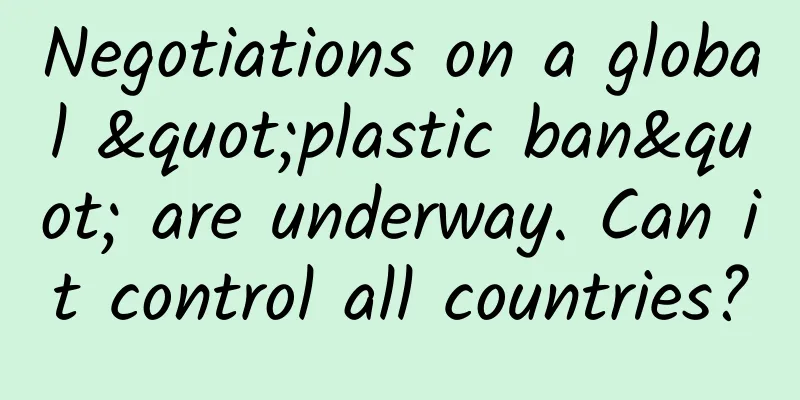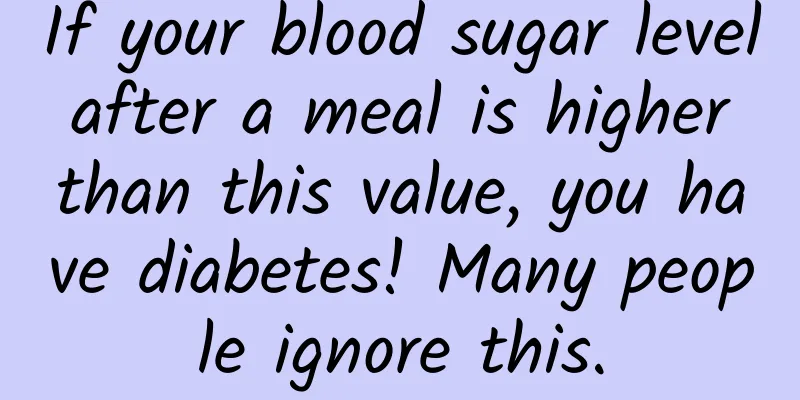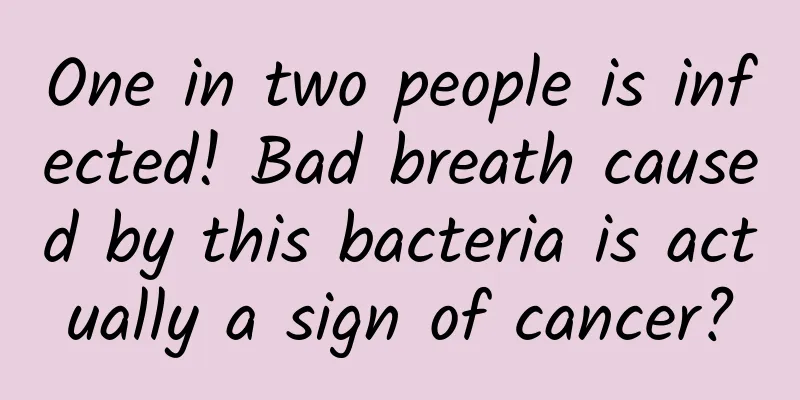Negotiations on a global "plastic ban" are underway. Can it control all countries?

|
Today, a global "plastic ban" is about to usher in an important fourth round of negotiations. A hundred years ago, plastic was a great invention, but now it has become a target of public criticism for damaging the environment and endangering human health. Faced with the huge plastic pollution, can mankind unite this time and make a good start in the "fight against plastic"? Plastic waste is piling up on land|UNEP From great inventions to the source of pollution, The "target" of public criticism that threatens the earth's ecology Less than 10% of plastic waste is recycled worldwide[1]. Large amounts of plastic waste are flowing into the ocean, causing fatal effects on marine life. Plastic has even been incorporated into the Earth’s geological layers, forming “ plastic rocks ” that are preserved in the geological record for a long time. Brazilian scientists discover 'plastic rocks' on Trindade Island | Marine Pollution Bulletin In addition to environmental pollution, plastics are also related to climate change. According to existing research reports, in recent years, the global plastics industry has emitted approximately 1.3 billion to 2 billion tons of CO2e (carbon dioxide equivalent) per year, accounting for 3.4% to 4.5% of the world’s total greenhouse gas emissions . It is expected that by 2050, this figure will rise to 2.8 billion to 3.2 billion tons of CO2e. The cumulative greenhouse gas emissions associated with the production, use and disposal of plastics may reach 15% of the global carbon budget. By 2060, the global plastics industry’s annual carbon emissions will reach more than 4 billion tons of CO2e [2] [3]. CO2e stands for "carbon dioxide equivalent", which is calculated by converting different greenhouse gases into an equivalent amount of carbon dioxide according to their global warming potential values. It can be used to uniformly compare the emissions of different greenhouse gases. | CIEL "Plastics and Health: The Hidden Costs of a Plastic Planet" Abstract Plastics, which are almost unavoidable in our daily lives, also pose a threat to human health. According to the latest research, more than 16,000 chemicals have been found in plastics[4]. These chemicals are released throughout the life cycle of plastics, and about a quarter of them pose potential risks to human health [5]. According to the United Nations Environment Programme's Chemicals in Plastics: A Technical Report, human exposure to these toxic chemicals has been found to be associated with a variety of acute, chronic or multigenerational toxic effects, and may have toxic effects on the human reproductive and developmental systems [6]. Throughout the life cycle of plastics, humans are exposed to a variety of toxic chemicals and microplastics through ingestion, inhalation and direct skin contact | CIEL "Plastics and Health: The Hidden Costs of a Plastic Planet" Therefore, plastic pollution is now at the forefront of the triple global crisis of climate change, biodiversity loss and environmental pollution , and the problem is getting worse. In recent years, the international community has recognized this serious environmental crisis and called for addressing plastic pollution at the global level and formulating a global multilateral environmental governance agreement on plastic pollution. However, none of the multilateral environmental agreements related to global plastic governance currently address the plastic problem directly . For example, the Basel Convention on the Control of Transboundary Movements of Hazardous Wastes and Their Disposal controls the transboundary movement of hazardous wastes; the Stockholm Convention on Persistent Organic Pollutants restricts and prohibits the use of a variety of hazardous chemicals; and the International Maritime Organization (IMO) is responsible for the management of plastic waste related to ship transportation to prevent marine pollution. Therefore, there is an urgent need for an international environmental agreement that systematically addresses plastic pollution, to control plastic pollution, improve resource utilization, and reduce greenhouse gas emissions. According to the latest statistics from a team of scientists, only 980 plastic chemicals are regulated by global environmental agreements such as the Stockholm Convention. There are still 3,651 plastic chemicals of concern that are not regulated and should be included in the regulated “red list”[7]. Will all countries have unified plastic restrictions? The "Global Plastics Pact" came into being The "Global Plastics Convention" starts with the world's highest-level environmental decision-making body, the United Nations Environment Assembly (UNEA). The member states of the Assembly currently have 193 UN member states and meet every two years to determine global environmental policy priorities and develop international environmental law. The United Nations Environment Assembly began to pay attention to the issue of plastic pollution as early as 2014. The first United Nations Environment Assembly had a priority for marine plastic pollution. By 2017, the third United Nations Environment Assembly had proposed the idea of a global joint response to plastic pollution. In 2021, many countries submitted proposals to the United Nations General Assembly, suggesting the formulation of an international instrument to address the problem of plastic pollution worldwide, among which "legal binding force" became one of the focuses of each proposal. After much discussion and resolution, in March 2022, at the resumed fifth session of the United Nations Environment Assembly, heads of state, environment ministers and representatives of other departments finally put the issue on the agenda, and the historic resolution " Ending Plastic Pollution: Towards a Legally Binding International Instrument " was born. The Assembly also decided to establish a special intergovernmental negotiating committee (INC) on plastic pollution and organize a series of five meetings for consultations and negotiations, hoping to eventually complete the formulation of a legally binding international instrument (what we call the "Global Plastics Convention") by the end of 2024 [8]. The achievement of this resolution marks the beginning of a unified global action to address plastic pollution. Resolution adopted|UNEP Another key point of this resolution is to emphasize the comprehensive consideration of the entire life cycle of plastics . Plastics can cause pollution in the entire process of production, consumption and disposal. We cannot only consider how to deal with plastic waste at the end, but also control it from the source. Therefore, the "Global Plastics Convention" is an " international environmental law " on plastic pollution. Based on the national conditions and capabilities of various countries, it formulates a series of control measures at the global level for the upstream, midstream and downstream stages of plastics . Resolution 5/14 requires five intergovernmental negotiating meetings. So far, three intergovernmental negotiating meetings have been held. The fourth meeting will be held in Ottawa, Canada from April 23 to April 29 to review the revised draft of this international instrument. According to the timeline of the resolution, the fifth and final negotiating meeting at the end of this year needs to reach a consensus on the draft text of the instrument, and a diplomatic conference will be held in 2025 to adopt and open the instrument for signature. So far, three intergovernmental negotiation meetings have been held. The first meeting discussed the framework structure of the "Global Plastics Convention" and asked the Secretariat to prepare an alternative plan for the potential elements of the instrument based on the discussion at the meeting. The second meeting discussed this alternative plan and proposed that the Secretariat prepare a "zero draft" of the instrument after the meeting. The third meeting discussed the "zero draft" of the instrument and asked the Secretariat to further prepare a revised draft of the instrument after the meeting. Currently, this draft is more than 70 pages long and will be discussed at the fourth negotiation meeting. It is expected to be further improved for the fifth discussion [9]|UNEP The fourth round of negotiations will be held tomorrow. Will the core differences produce results? Combined with the three intergovernmental negotiations, the parties still have major differences on the substantive terms of the "Global Plastics Convention". Representatives of various countries may consider their own political and economic positions, insufficient funds, and compliance capabilities. There may be delays, stagnation, requests for legal terminology interpretation, and failure to pass rules of procedure during the negotiation process. There are many challenges to reaching a final consensus. The following is a summary of several core differences. Solving plastic "pollution"? Plastics play a vital role in modern daily life. Some countries represented in the negotiations believe that it is not enough to simply treat them as such. Instead, we can distinguish the types of plastics and identify the types of plastics and plastic products that may cause plastic pollution , so as to find the right remedies, such as working on product design to minimize plastic pollution. According to a study in Plastic Science, short-lived plastic products, mainly plastic packaging and other disposable plastic products, are the largest source of plastic pollution [10]. Flexible plastic films and multifunctional plastic materials are the most difficult to recycle, accounting for 59% of short-lived plastics, but causing 80% of pollution. This is also the focus of attention of many domestic environmental protection organizations on plastic issues, advocating that ordinary consumers use less disposable plastic products and reuse more. However, this is far from enough. Plastic products should be reduced from the source, and product design should be changed from disposable to durable and reusable, while establishing a reuse system. Dispute over the scope of the “Global Plastics Pact”? According to Resolution 5/14, the plastic problem should be addressed based on an integrated approach to the entire life cycle of plastics. Some representatives of member States believed that the entire life cycle of plastics should cover the entire life cycle of plastics from extraction to production, design, use, consumption, disposal and remediation. Some representatives believed that the scope should apply to plastic pollution throughout the entire life cycle from plastic product design to the environmentally sound management of plastic waste. There were also other suggestions (there were as many as 16 options for the scope of the text). One of the core disputes here is whether to restrict the upstream production of plastics. As we know, plastic production mainly uses fossil fuels - the more plastic is produced, the more fossil fuels are burned. The strong intervention of the Gulf oil countries has brought the dispute to a stalemate. Plastic life cycle The entire life cycle of plastics can be simply divided into upstream, midstream and downstream activities. Upstream activities include the raw materials of plastics obtained from crude oil, natural gas or recycled and renewable feedstocks (e.g. biomass) and polymerization. This phase already occurs with the leakage of plastics into the environment (e.g. pellets, flakes). Midstream activities include the design, manufacture, packaging, distribution, use (including reuse) and maintenance of plastic products, as well as related services. Keeping plastic products in the midstream for as long as possible is one of the ideal practices to achieve circularity, as the midstream is the stage where plastic products have the highest value . Downstream activities involve end-of-life management – including separation, collection, sorting, recycling and disposal. Control measures - mandatory or voluntary? The most frequently mentioned requirement of the "Global Plastics Convention" is that the instrument is "legally binding", which is actually quite common in global multilateral environmental agreements. Take the Minamata Convention on Mercury as an example. Because heavy metal mercury has been confirmed to cause great harm to neurological health, the Minamata Convention prohibits the manufacture, import and export of mercury-added products (including 9 products such as mercury-containing thermometers, sphygmomanometers, batteries, fluorescent lamps, etc.). After signing, countries agree to be bound by this convention and accept the review of the Implementation and Compliance Committee. The substantive provisions of the instrument, namely the control measures, are reflected in whether there are clear constraints on countries, and whether they are mandatory measures or voluntary measures . For example, the production and supply levels of primary plastic polymers are set with a prescribed global reduction target, or the production levels are reduced by national voluntary targets; for hazardous chemicals in plastics, according to the list in the annex, whether necessary measures are taken to eliminate them, or to minimize and eliminate them as appropriate. In global multilateral environmental agreements, when mandatory control measures are established, each contracting party will be bound and reviewed, and will report to the Conference of the Parties on the completion of each country on a regular basis . Part II of the instrument: Substantive provisions: Control measures The global governance system was actually established gradually after the two world wars in the 20th century. The global environmental governance system was established even later, and was developed under the promotion of the United Nations since 1972. It is difficult to reach a global consensus on detailed rules to end plastic pollution in such a tight time. However, plastic pollution is already an imminent environmental problem in the world, so we still have to speed up the pace and go all out. For us, if the "Global Plastics Convention" is signed and passed, it will be a global "plastic ban" . The disposable plastic packaging, disposable tableware and other plastic products that we are accustomed to may gradually disappear due to the treaty, and life may become less convenient. But for turtles suffocated by plastic, seabirds that get sick from eating plastic, and countless people who are worried about plastic pollution, a future that ends plastic pollution is a future worth looking forward to. Author: Ling Editor: Little Towel, Mai Mai Title image source: UNEP This article comes from GuokrNature (ID: GuokrNature) |
<<: Don’t be fooled by its cute and sloppy appearance, it is actually the domineering “Elvis”!
>>: After 40 years of fighting acid rain, Tsinghua University may finally win
Recommend
Huawei Chairman: Android is still the first choice. Whether Hongmeng will be used in mobile phones has not yet been determined.
On July 12, at Huawei's "2018 Sustainabi...
How do companies operate Douyin? Just use these 5 tricks!
Nowadays, “two Weibo and one Douyin” have become ...
The value of a company lies in its users, but our goal is not to maximize user satisfaction
The customer is God; 0 negative reviews is the gr...
CES 2017: A new track for driverless cars
In 2015, automotive electronics supplier Delphi A...
[Smart Farmers] From ancient times to the present, from small to large, how has it influenced the world? Uncovering the "global journey" of wheat
Have you ever thought that every meal we eat is i...
Practical Tips丨A review of the four creative points in financial management advertising
According to the industry delivery report previou...
Brand marketing promotion: How to create a hit brand?
Introduction: Good brands try their best to meet ...
Wilson: New Energy Vehicle Industry Monthly Report for December 2021
01. Market performance Overall performance of the...
9 content marketing tips to help you create killer copywriting!
This article is 2500 words long and is recommende...
Too dangerous! A group of people were having a barbecue and suddenly it exploded! The reason was actually related to the ground
Oysters, beef cubes, pork belly Chicken legs, pal...
The fifth iOS 14 developer beta appears with these detailed updates
Apple today released the fifth developer beta of ...
Precise positioning of Moments ads, do you want to know how WeChat sees you?
Do you want to know how WeChat sees you? Since th...
Eating breakfast like this can actually accelerate aging? A change in breakfast can reduce the risk of disease!
What time do you usually have breakfast every day...
Wild rabbits are a disaster in Australia, and Sichuan people are very "anxious"
Audit expert: Ran Hao Well-known science writer W...









